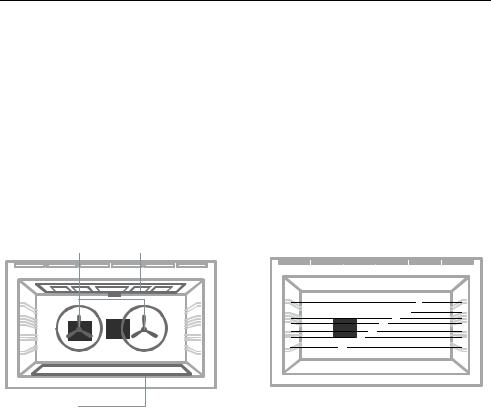Fisher & Paykel OR90SCG4W1, OR90SCG4B1, OR90SCG4X1, OR90SCG2X1 Product Manual

FREESTANDING COOKER
OR90SCG2, OR90SCG4
& OR90SDG4 models
USER GUIDE
NZ AU GB IE

! WARNING!
If the information in this manual is not followed exactly, a fire or explosion may result causing property damage, personal injury or death.
Do not store or use gasoline or other flammable vapours and liquids in the vicinity of this or any other appliance.
NEVER use this appliance as a space heater to heat or warm the room. Doing so may result in carbon monoxide poisoning and overheating of the appliance.
WHAT TO DO IF YOU SMELL GAS
yDo not try to light any appliance.
yDo not touch any electrical switch.
yDo not use any phone in your building.
yImmediately call your gas supplier from a neighbour’s phone. Follow the gas supplier’s instructions.
yIf you cannot reach your gas supplier, call the fire department.
Installation and service must be performed by a qualified installer, service agency or the gas supplier.

CONTENTS
Safety and warnings |
2 |
Introduction |
11 |
First use |
|
Control panel and clock display |
13 |
Setting the clock |
14 |
Positioning the shelves |
15 |
Conditioning the oven |
18 |
Oven use |
|
Cooking guide |
20 |
Oven functions |
22 |
Cooking charts |
26 |
Setting the timer |
32 |
Auto Cook |
34 |
Locking the oven controls |
37 |
User preference settings |
38 |
Sabbath mode |
40 |
Cooktop use |
|
Using your gas cooktop |
42 |
Cooking guideline and cookware |
45 |
Using the storage space |
47 |
Care and cleaning |
|
Manual cleaning chart |
48 |
Removing the oven door |
52 |
Removing and replacing the oven door glass |
53 |
Replacing the oven door |
61 |
Removing and replacing the side racks |
62 |
Removing and replacing the storage drawer (some models only) |
63 |
Replacing the burner parts |
66 |
Replacing an oven light bulb |
64 |
Troubleshooting |
67 |
Alert codes |
71 |
Warranty and service |
72 |
Energy guidelines (GB IE only) |
73 |
IMPORTANT!
SAVE THESE INSTRUCTIONS
The models shown in this user guide may not be available in all markets and are subject to change at any time. For current details about model and specification availability in your country, please visit our website listed on the back cover or contact your Fisher & Paykel dealer.
1

SAFETY AND WARNINGS
Your freestanding cooker has been carefully designed to operate safely during normal cooking procedures. Please keep the following guidelines in mind when you are using it:
!WARNING!
Explosion Hazard
Do not store flammable materials such as gasoline near the cooktop.
Do not store flammable material in the oven or storage compartment.
Do not spray aerosols near the cooktop during use.
Failure to follow this advice may result in death or serious injury.
!WARNING!
Electrical Shock Hazard
Switch the cooker off at the wall before replacing fuses or the oven lamp.
Failure to follow this advice may result in electrical shock or death.
2

SAFETY AND WARNINGS
!WARNING!
Poisoning Hazard
Never use this appliance as a space heater to heat or warm the room. Doing so may result in carbon monoxide poisoning and overheating of the appliance.
Failure to follow this advice may result in poisoning or death.
!WARNING!
Cut Hazard
Take care - some edges are sharp.
Failure to use caution could result in injury or cuts.
3

SAFETY AND WARNINGS
!WARNING!
Fire Hazard
Never leave the cooktop unattended when in use. Boilover causes smoking and greasy spillovers that may ignite.
Do not place aluminium foil, dishes, trays, water or ice on the oven floor during cooking, as doing so will irreversibly damage the enamel; lining the oven with aluminium foil may even cause fire.
Never use your appliance for warming or heating the room. Persons could be burned or injured or a fire could start.
Storage in or on appliance: flammable materials should not be stored in an oven or near its surface.
Failure to follow this advice may result in overheating, burning, and injury.
4

SAFETY AND WARNINGS
!WARNING!
Hot Surface Hazard
Accessible parts may become hot when this cooker is in use.
To avoid burns and scalds keep children away.
Do not touch hot surfaces inside the oven. Use oven mitts or other protection when handling hot surfaces such as oven shelves or dishes.
Take care when opening the oven door.
Let hot air or steam escape before removing  or replacing food.
or replacing food.
Do not touch the cooktop components, burners, trivets/pan supports or the base when hot.
Before cleaning, turn the cooker off and make sure it is cool.
Failure to follow this advice could result in burns and scalds.
5

SAFETY AND WARNINGS
IMPORTANT SAFETY INSTRUCTIONS!
yRead all the instructions before using the appliance. Use the appliance only for its intended purpose as described in these instructions.
yProper installation: be sure your appliance is properly installed and earthed by a qualified technician. A risk of tip-over exists when the appliance is not installed in accordance with the installation instructions.
yDo not operate the appliance if it is damaged or not working properly. If you received a damaged
product, contact your dealer or installer immediately.
yClean only the parts listed in this manual.
yDo not modify this appliance.
yThis appliance is to be serviced only by an authorised person.
yIsolating switch: make sure this cooker is connected to a circuit which incorporates an isolating switch providing full disconnection from the power supply.
yHousehold appliances are not intended to be played with by children.
yDo not leave children alone – Children should not be left alone or unattended in the area where the appliance is in use. They should never be allowed to play with the appliance or to sit or stand on any part of the appliance.
yChildren of less than 8 years old must be kept away from the appliance unless continuously supervised. This appliance can be used by children aged from 8 years and above, and persons with reduced physical, sensory or mental capabilities or lack of experience and knowledge, if they have been given supervision or instruction concerning the use of the appliance in a safe way and they understand the hazards
involved. Cleaning and user maintenance shall not be done by children without supervision.
6

SAFETY AND WARNINGS
IMPORTANT SAFETY INSTRUCTIONS!
yDo not store things children might want above the oven. Children could be burned or injured while climbing on the oven to retrieve items.
ySafe food handling: leave food in the oven for as short a time as possible before and after cooking. This is to avoid contamination by organisms which may cause food poisoning. Take particular care during warmer weather.
yDo not place aluminium foil, dishes, trays, water or ice on the oven floor during cooking as this will irreversibly damage the enamel.
yDo not use aluminum foil to line any part of the oven, storage drawer or cooktop. This will cause heat to be trapped underneath it. This trapped heat can upset the cooking performance and damage the finish of the oven or cooktop parts.
yDo not stand on the door, or place heavy objects on it.
yDo not use harsh abrasive cleaners or sharp metal scrapers to clean the oven door glass since they scratch the surface, which may result in shattering of the glass.
yDo not use a steam cleaner to clean any part of the cooker.
yDo not use an asbestos mat or decorative covers between the flame and the saucepan as this may cause serious damage to your cooktop.
yDo not store flammable items in the oven or storage drawer or on the cooktop surface.
7

SAFETY AND WARNINGS
IMPORTANT SAFETY INSTRUCTIONS!
yDo not place aluminium foil or plastic dishes on the cooktop burners.
yDo not let large saucepans or frying pans overlap the bench as this can deflect heat onto your benchtop and damage the surface.
yDo not let large saucepans, frying pans or woks push any other pans aside. This could make them unstable or deflect heat onto your benchtop and damage the surface.
ySaucepan handles may be hot to touch. Ensure saucepan handles do not overhang other gas burners that are on. Keep handles out of reach of children.
yIf the electrical supply cord is damaged, it must only be replaced by an authorised person.
yThis cooker is not to be used as a space heater, especially if it is installed in marine craft or in a caravan.
yThe use of a gas cooking appliance results in the production of heat and moisture in the room in which it is installed. Ensure the kitchen is well ventilated. Keep natural ventilation holes open or install a mechanical ventilation device (mechanical extractor hood). Prolonged intensive use of the appliance may call for additional ventilation, for example opening of a window, or more effective ventilation, for example increasing the level of mechanical ventilation where present.
8

SAFETY AND WARNINGS
IMPORTANT SAFETY INSTRUCTIONS!
yWear proper apparel. Do not wear loose fitting or hanging garments when using the appliance. They could ignite or melt if they touch an element or hot surface and you could be burned.
yAlways keep oven vents unobstructed.
yUse only dry oven mitts or potholders. Moist or damp potholders on hot surfaces could result in burns from steam. Do not let potholders touch hot areas or heating elements. Do not use a towel or a bulky cloth for a potholder. It could catch fire.
yCaution. Hot air can blow from the vent at the top of the oven as part of the oven’s cooling system.
yPlacement of oven shelves: always position shelves in the desired location before preheating the oven. If a shelf must be removed while the oven is hot, do not let the oven mitts or potholder contact hot heating elements in the oven or the base of the oven.
9

INTRODUCTION
90cm MODELS
OR90SCG2
OR90SCG4
OR90SDG4
11

INTRODUCTION
Before you start
1Make sure that the anti-tip bracket at the right rear of the cooker has been properly installed.
2Make sure that the installer has completed the ‘Final checklist’ in the Installation instructions.
3 Read this guide, taking special note of the ‘Safety and warnings’ section.
4Remove all accessories and packaging from the oven and cooktop. Recycle items that you can. If any adhesive residue is left on surfaces, remove this using dishwashing liquid on a soft cloth. Do not use any harsh or abrasive cleaners.
5Make sure you follow the instructions under ‘First use’ before using your cooker for cooking.
Burner
Overview
Features may vary.
Burner grates |
Back trim |
Clock display and controls 




Oven function and temperature dials
Control panel 



Oven frame
Side racks |
|
Full extension sliding shelf |
|
(some models only) |
|
Oven door gasket |
Cooktop burner dials |
Step down wire shelf |
|
Grill Rack |
|
(some models only) |
|
|
Label with model |
|
and serial numbers |
 Foot (Cover)
Foot (Cover)
Roasting dish
Storage drawer/compartment
12

FIRST USE
Control panel layout
1
|
2 |
3 |
4 |
|
5 |
1 |
Oven display |
|
|
4 |
Temperature dial |
2 |
Oven controls |
|
|
5 |
Cooktop control dials |
3 |
Function dial |
|
|
|
|
Clock display and controls |
|
Timer (see 'Setting the timer') |
End time (see 'Auto cook') |
Cook time (see 'Auto cook') |
Lock (see 'Locking the oven controls') |
8888 |
o |
|
|
|
% |
|
pm |
Timer |
Menu |
Minus |
Plus |
Accept |
Cancel |
Timer button |
|
Accept button |
|
Cancel/back button |
|
y Press to set the timer |
y Press to accept |
y Press to go back |
|||
|
|
|
|
y Press and hold to cancel |
|
13

FIRST USE
Setting the clock
When your oven is first turned on, or after a power cut, the display will flash. You will need to set the clock in order to use the oven.
24hr |
24hr |
1 The display will flash 24 hr |
2 Press |
or to scroll between |
|
24 hr and 12 hr |
|
|
y The display will stop flashing. |
|
|
3 Press |
to confirm. |
00 00 19
00 19 35
35
4 Press  or
or  to adjust the time.
to adjust the time.
5Press to confirm and set the time.
to confirm and set the time.
yPressing the cancel  button at any point during the clock setting process will set the clock at 00:01
button at any point during the clock setting process will set the clock at 00:01
14

FIRST USE
Positioning the shelves
yShelf positions are numbered from the bottom.
yPosition the shelves you will need before turning the oven on.
yFor advice on which shelf position to use, see sections ‘Oven functions’, ‘Oven cooking guidelines’, and ‘Cooking charts’.
IMPORTANT!
Always position the oven shelves before turning the oven on. Remove any unused shelves and baking utensils from the oven.
7
6
5
4
3
2
1
Wire shelf
Front safety stop
Wire shelf
Safety stop |
Safety stop |
|
Front stop |
|
Wire shelf |
Slide |
Full extension |
|
sliding shelf |
|
|
|
Flat wire shelf and step-down wire shelf
yThese shelves have safety stops to keep them from sliding out of the oven when pulled forward.
yThe front stops prevent the shelves from hitting against the back of the oven.
Full extension sliding shelves (some models only)
yThe wire shelves and slides are built together as one unit.
yWhen positioned correctly, the slides will prevent the wire shelves from tilting when pulled forward.
yBeware: these shelves are heavy.
15

FIRST USE
To insert the sliding shelves (some models only)
Guard rail
1Make sure the guard rail is at the back, facing up and the slides are not extended.
2Hold the shelf firmly with both hands, making sure you grip the wire shelf too to stop it sliding forward.
3Hook the rear tags over the wires of the desired shelf position on both side racks.
4Push the shelf all the way into the oven, ensuring the front and rear tags either side are securely locked behind the side rack wires.
To remove the shelves
1 Wait for the oven to cool down completely.
2Hold the shelf firmly with both hands, making sure you grip the wire shelf too to stop it sliding forward.
3 Pull the shelf forward about ¾ of the way.
4 Lift the rear of the shelf slightly so that the tags clear the side rack wires, then remove.
16

FIRST USE
To insert the wire shelves
Guard rail
1Make sure the guard rail is at the back, facing up.
2Position the shelf: it should rest on the side rack wires, as shown.
Safety stop
3 Tilt the front up slightly to help the safety stops clear the side rack wires.
4 Lower the shelf back onto the side rack wires and slide all the way into the oven.
To remove the shelves
1 Wait for the oven to cool down completely. 2 Pull the shelf forward about ¾ of the way.
3 Tilt the front up slightly to help the safety stops clear the side rack wires. 4 Remove the shelf.
17

FIRST USE
Conditioning the oven
It is important to condition your oven before using it for cooking and baking. Conditioning will burn off any manufacturing residues and ensure that you get the best results right from the start.
Before you start:
yMake sure you have removed all packaging and any cable ties used to secure the shelving during transit.
yMake sure all shelves are fitted in the oven.
yMake sure all oven control dials are turned to O (OFF).
--->
1 Select the Bake function. |
2 |
Set the temperature to 200°C for 30 |
y The halo will glow white. |
|
minutes. |
|
y |
The halo will glow red while the oven is |
|
|
heating up. |
|
y |
When the oven has heated a tone will |
|
|
sound and the halo will turn white. |
Fan |
Fan |
Grill |
Forced |
3After 30 minutes, select the Fan Grill function
yHeat at 200°C for 10 minutes.
4After 10 minutes, select the Fan Forced function.
yHeat at 200°C for 20 minutes
18

FIRST USE
FUNCTION |
|
TEMPERATURE |
||
|
|
|
|
|
|
|
|
|
|
|
|
|
|
|
5After 20 minutes turn both the function and temperature dials to 0 (OFF). The halos will go out.
yThere will be a distinctive smell and a small amount of smoke during the conditioning process as manufacturing residue is burnt off. This is normal, but make sure the kitchen is well ventilated during the conditioning.
yOnce cooled, wipe out the oven and warmer drawer with a damp cloth and mild detergent, and dry thoroughly.
19

COOKING GUIDE
Oven cooking guidelines
IMPORTANT!
yUse all the oven modes with the oven door closed.
yNever use aluminum foil to cover the oven shelves or to line the floor of the oven. The trapped heat can irreversibly damage the enamel and may even cause fire.
yDo not place water, ice, or any dish or tray directly on the oven floor, as this will irreversibly damage the enamel.
yDo not cover the roasting dish with aluminum foil. This will catch the grease and could cause fire.
yDo not use plastic wrap or wax paper in the oven.
yFor food safety reasons, do not leave food in the oven for longer than two hours before and after cooking or defrosting. This is to avoid contamination by organisms which may cause food poisoning. Take particular care during warmer weather.
Fans |
Upper Elements |
Shelf positions |
7
4 5 6
2 3 1
Lower
Element (concealed)
BAKING
yFor best results when baking, always preheat your oven. The temperature halo will change from red to white when the set temperature is reached.
yWhile the oven is heating the grill element will be on.
yWe advise you do not open the door until at least ¾ of the way through cooking.
yMake sure cake pans do not touch each other or the sides of the oven.
yWhen baking double the recipe (especially cookies) cook time may need to increase.
yYour cookware will influence baking times. Dark pans absorb the heat more quickly than reflective pans; glass cookware may require a lower temperature
yMulti-shelf baking may also require a slight increase in cooking time.
Shelf Position Guide
ySingle shelf: Place your baking on a shelf that will have the top of your pan near the center of the oven cavity.
yMulti shelf: Always leave a space between shelves to allow the air to circulate.
20

COOKING GUIDE
Oven cooking guidelines
ROASTING
yThe Roast function is designed to brown the outside of the meat but still keep the inside moist and juicy.
yBoneless, rolled or stuffed roasts take longer than roasts containing bones.
yPoultry should be well cooked with the juices running clear and an internal temperature of 74°C.
yIf using a roasting bag, do not use the Roast function. The initial searing stage is too hot for roasting bags. Use Fan Bake or Fan Forced and follow the manufacturer’s instructions.
yWhen using the Roast function, do not cover your roast, as this will stop the searing process browning the outside of the meat. If you prefer to roast in a covered pan, use the Fan Bake function instead and increase the temperature by 20°C.
yCook larger cuts of meat at a lower temperature for a longer time. The meat will cook more evenly.
yAlways roast meat fat side up. That way, basting may not be required.
yAlways rest the meat for at least 10 minutes after roasting to allow the juices to settle.
yRemember the meat will continue to cook for a few minutes after removing it from the oven.
Shelf Position Guide
Place the meat on a shelf so that is is in the center of the oven or lower.
GRILLING
yThis is a healthier alternative to frying.
yAlways grill with the oven door completely shut.
yFor best results allow 5 minutes of preheat before placing food in the oven.
yIf you use glass or ceramic pans, be sure they can withstand the high temperatures of the grill.
yTo avoid piercing the meat and letting juices escape, use tongs or a spatula to turn the meat halfway through cooking.
yBrush meat with a little oil to help keep the meat moist during cooking. Alternatively marinade the meat before grilling (but be aware that some marinades may burn easily).
yWhere possible grill cuts of meat of a similar thickness at the same time. This will ensure even cooking.
yAlways keep a close watch on your food while grilling to avoid charring or burning.
Shelf Position Guide
yFor thinner cuts of meat, toasting or browning foods, use a higher shelf position.
yThicker cuts of meats should be grilled on lower shelves or at a lower grill setting to ensure even cooking.
REHEATING
yUse Bake or Fan Bake to reheat food.
yBake and Fan Bake are particularly good for reheating pastry based items, as the base heat will help re-crisp the pastry case.
yAlways reheat food to piping hot. This reduces the risk of contamination by harmful bacteria.
yOnce hot, set the oven temperature to WARM in or use the warming drawer to keep food hot.
Never reheat food more than once.
21

OVEN FUNCTIONS
IMPORTANT!
yUse all the functions with the oven door closed.
BAKE
upper outer and lower elements
yHeat comes from both the upper and lower elements. The fan is not used in this function.
yIdeal for cakes and foods that require baking for a long time or at low temperatures.
yThis function is not suitable for multi-shelf cooking.
Ideal for moist foods that take a longer time to cook eg rich fruit cake, or bread.
FAN FORCED
fan and rear element
yBy using the central rear heating element and fan, hot air is blown into the cavity, providing a consistent temperature at all levels, making it perfect for multi-shelf cooking.
yTrays of cookies cooked on different shelves are crisp on the outside and chewy in the middle.
yMeat and poultry are deliciously browned and sizzling while remaining juicy and tender.
yCasseroles are cooked to perfection and reheating is quick and efficient.
yWhen multi-shelf cooking it is important to leave a gap between trays (eg use shelves 3 & 5) to allow the air to move freely. This enables the browning of foods on the lower tray.
yIf converting a recipe from Bake to Fan Forced, we recommend that you decrease the bake time or decrease the temperature by approximately 20°C.
yFor items with longer bake times (eg over an hour) it may be necessary to decrease both time and temperature.
Ideal for multi-shelf cooking biscuits, cookies, scones, muffins and cupcakes.
22
